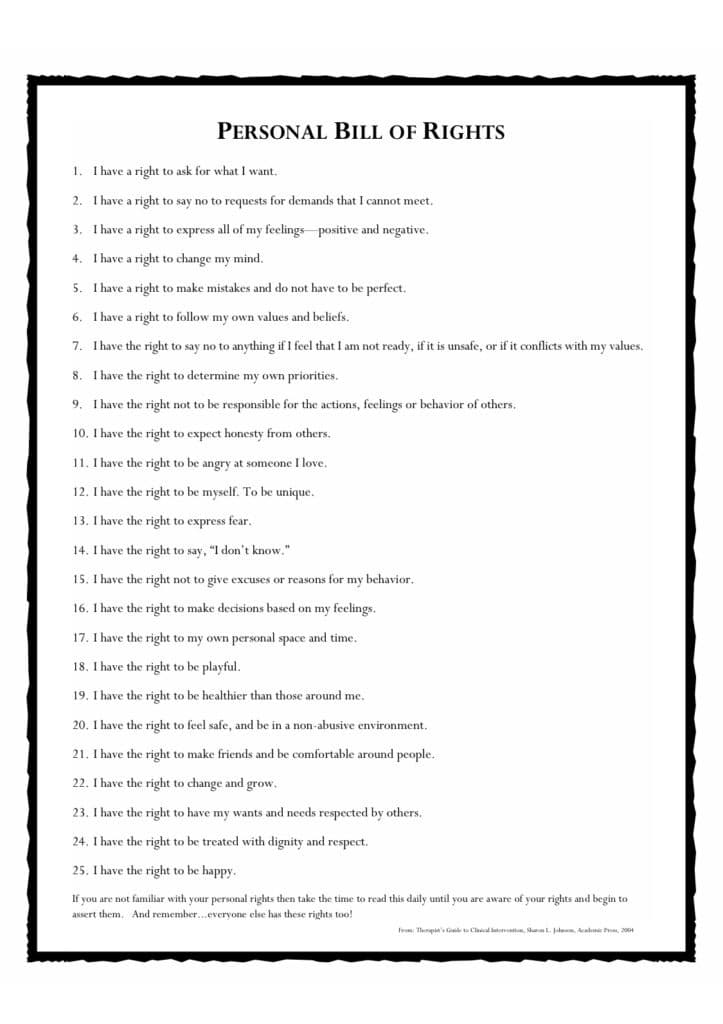1. Listening to Our Bodies
Our bodies often know our emotions before our brains do. Listening and understanding how our bodies respond can be beneficial to know where boundaries are being crossed, and improves our body and mind wellness. Tools like the progressive muscle script or yoga can help us be aligned with our bodies.
Do you clench your fists when you have anxiety?
Does your neck get tight when you are scared or angry?
Does your stomach churn when someone is dishonest?
You might notice your clenching fists and ask yourself “hmm, am I feeling anxious? If so, where is the anxiety coming from?
I’m noticing I start clenching as soon as … comes into the room.
Or
I’m noticing my body relaxes and feels peace when I’m with … or when I’m doing …
A link for the progressive muscle script: https://www.youtube.com/watch?v=1nZEdqcGVzo
2. What Do You Value?
Exploring your values and rating them can help you identify where values and behaviors may not be aligned. As part of your body and mind wellness, this exercise can help you prioritize your values and determine which things are most important in your life.
Where are you spending your time and/or emotional energy? Does it line up with your top values? If not, what adjustments would you like to make?
The following list can help you understand what your top values are.

3. What Are Your Personal Rights?
Explore the “bill of rights” and rate how true they FEEL (not how they make you think).
Now go through the same list, and rate how true they feel to you that OTHER people have those rights.
Are the ratings different? If so, explore why others are allowed more rights than you.

When you’ve explored these 3 areas, your body and mind will begin to work together to explore your reality, and consequently, your body and mind wellness will begin to flourish.
Has your brain been trying to convince your gut that you trust someone?
If you feel angry, did you ignore a Personal Right or did a behavior go against a top Value?
So often we ignore our needs. We ignore our emotions. We ignore ourselves to “keep the peace” or calm our uncomfortable emotions.
Once the body and mind begin to work together, we find our true selves enough to know where boundaries are being crossed and where we need to be firm (with ourselves or others).
-Kirsty Nash, CMHCI


